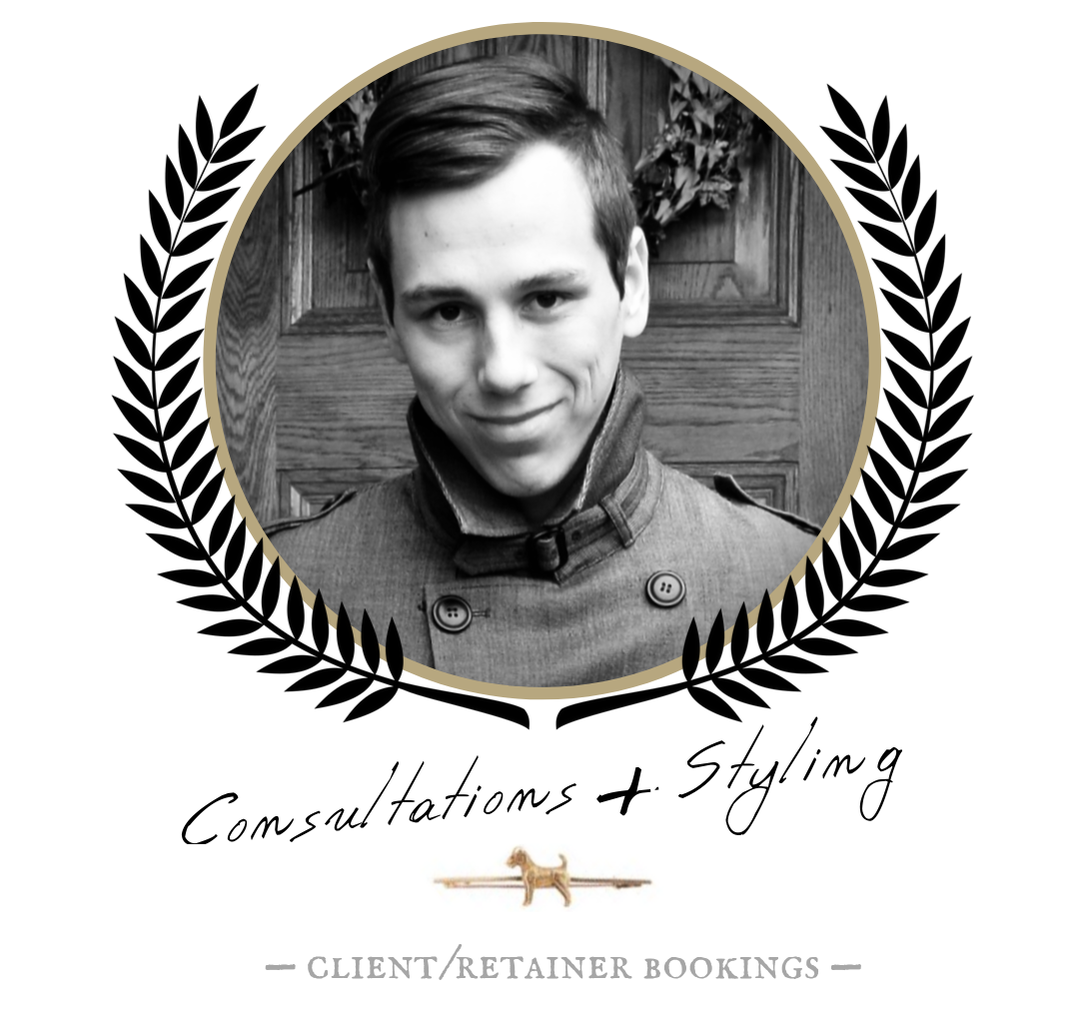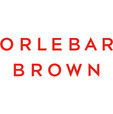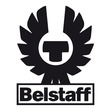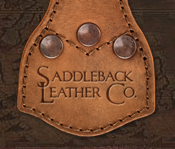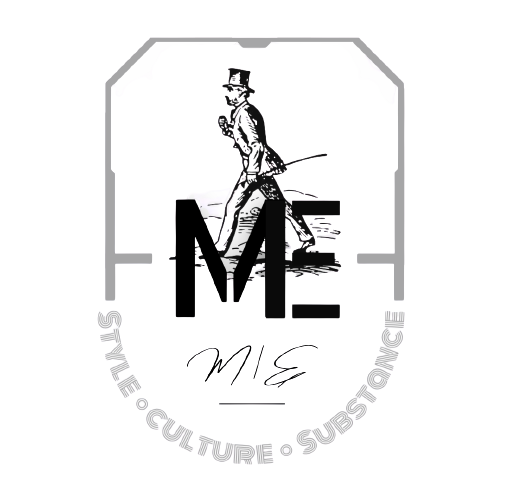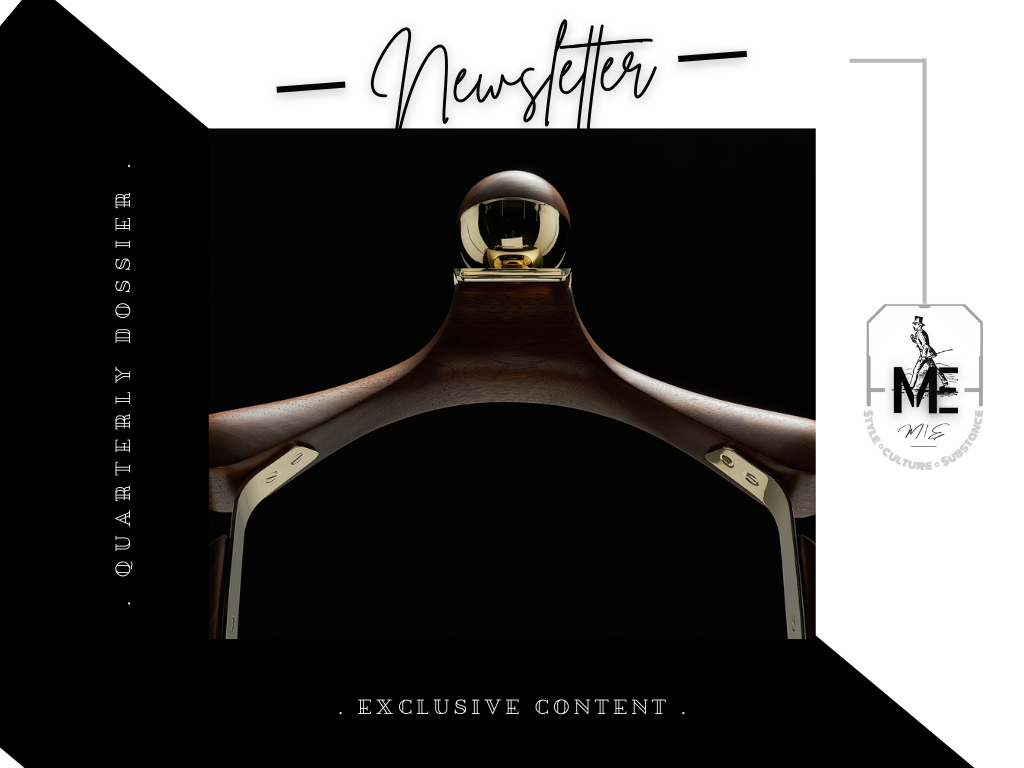| Job interviews have a tendency of being — much like many modern workplace dress codes — quite ambiguous, unpredictable and (on occasion) unsettling affairs that can prove rather quite difficult to get a handle upon; Latent minefields, if you will, rife with professional pitfalls aplenty lying in the wait that are troublesome for one to not only navigate with considerable tact and poise but to conquer with (tasteful) sartorial ease. |
And that, gentlemen, is a silver (sartorial) lining if I've ever come across one: A self-reassuring belief that if you arrive dressed to impress and with your best foot placed forward you will indeed be positioning yourself for success as direct consequence of inspiring confidence in not only yourself and your aesthetic (appearance) but also that of your abilities, resourcefulness and professional respectability whether the ultimate goal is to land your first/dream job, win over yet another client to add to your rolodex, or simply to move onto a new challenge.
To wit, my point therein is twofold:
Indeed, it cannot be stressed enough how important it is to carefully paint — with discerning rather than broad brushstrokes — a professional portrait of oneself that will be well-received by those who hold the cards (i.e. the decision makers) given how we look and present ourselves, from our state of dress through grooming and uniqueness of gait, make for the most noteworthy (and exclusive) personal traits to which most prying eyes (employers, clients and recruiters alike) are keen in using so as to hastily adjudge and take measure of our character (for better AND worse) as it pertains to gauging our compatibility (or fit) well before our professional credentials (experience, education et al.) have an opportunity to enter the equation.
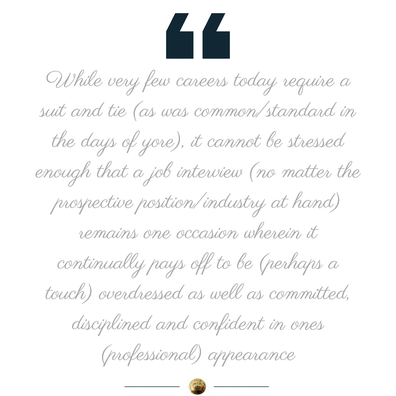
So, while every managing hirer (as well as prospective client) will certainly approach an interviewee (or collaborator) with different inquisitive techniques and/or benchmark questions for assessing professional compatibility and personality fit (read: your IQ, EQ and identity capital) what you (the job hunter) must always do is make an effort to arrive dressed the proper part so as to (tastefully) convey that peculiar brand of self-worth, confidence and purposefulness in your appearance that will both leave an immediate positive mark and work (lifelong) wonders for your career prospects when the collective dust settles.
The goal, after all, ultimately remains to be that of landing a job; a task to which I believe can be made exceedingly more probable if you present yourself in a confident and poised manner that will most assuredly leave a lingering good taste in the mouthes of those weighing your candidacy and measuring your intent.
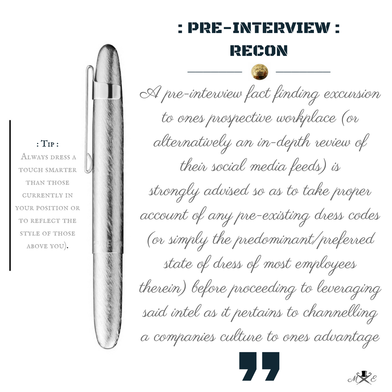
On that note, we’ve all heard the popular adages of “dressing to impress” (which is referenced above) and “dressing as the man you want to be”, however I feel that the most contextually apropos maxim worth referencing herewith would be that of aspiring to “dressing for the job you want” given that imitation is often said to be the sincerest form of flattery — (sartorial) birds of a feather tend to flock together after all (and especially in a uniformed professional capacity).
Howbeit, it warrants reiterating one last time that what we choose to wear (whether on the job or to an interview) is as critical to demonstrating that we are driven, capable and consummate professionals as is our previous work experience, academic credentials and fit on paper; This, of course, is just another way to say that if you get your look wrong you’ll appear as though you could care less about your prospects nor the importance of the job or your interviewees time.
Beyond that, well its important to maintain that, as always, proper fit remains THE key to looking good as does personal comfort in whatsoever one wears so as to continually appear capable and easy going through veritable thick-and-thin; That is to say, if you manage to strike just the perfect balance between being well turned-out and being self-aware of the job role, its accompanying company culture/dress code and your surroundings you will be primed for success.
So, while the tension may be high and the dearth of suiting/clothing options (from colour and pattern through style and fit) at your disposal seemingly boundless, it is essential to remember that it is the confidence you both feel in yourself as well as that in which you inspire in others (a la your appearance, abilities and cultural fit) that will make a world of difference.
To that end, herewith is an inspirational guide/sartorial primer on how to best inspire confidence in your appearance whilst navigating the minefield that exists in regards to how to properly dress for a job interview (or any day on the job thereafter for that matter) alongside that of a compilation of handy style maxims and interviewing tips that I can only hope will help stake the odds ever in your favour respective of your chosen career path/trajectory or what pressing office dress code currently perplexes you — from business and tech through creative freelancing and smart-casual.
For you see, when you know you look (and feel) good, arrive appropriately attired for the intended position (in accordance with a prescribed dress code), and are confident in yourself and abilities the sky is truly the limit granted you’ve taken the time and made an effort to presenting yourself in a sharp, well-kempt and professional manner.
Telling as that may be, should you need further guidance do be sure to consult the guide below so as to reap the benefits of knowing what truly works best where and why…
| 1 — IT NEVER FAILS TO IMPRESS: A good looking (and well tailored) suit will never let you down granted it is cut elegantly and in a seasonally appropriate (ideally four-season wool) fibre that both looks and feels cool and up for the job; It is a failsafe crowdpleaser when paired with a crisp white dress shirt, navy grenadine tie & black polished Oxfords 2 -- IT ILLUSTRATES THAT YOU ARE A MAN OF CONSIDERABLE SELF-WORTH, SELF-RESPECT & RELIABILITY — A consummate professional of style and substance as it were. 3 — IT IS PROFESSIONAL CAT NIP (NOT TO MENTION SARTORIAL COMFORT FOOD) THAT IS AT ONCE ALWAYS WELL-RECEIVED & (ARGUABLY) SUITABLE FOR MOST ANY CAREER (OR OCCASION) -- In doing so it proves the old adage true that it is always better to be a touch overdressed than underdressed 4 — IT EXEMPLIFIES WHY SIMPLICITY IN DRESS REMAINS BOTH A PROFESSIONAL VIRTUE & STANDARD: By wearing a simple, solid suit you will all but guarantee that your skill set, experience and personality are what remain most memorable after an interview rather than that of your chosen attire (the latter of which should supplement/compliment your credentials rather than rally against them) 5 — AND, IT IS THE FINEST (AND MOST UTILITARIAN) ARTICLE OF (PERSONAL/PROFESSIONAL BRIDGING) ADORNMENT A GENTLEMAN CAN OWN |
| ———————————-- Traditionally worn (solely) to anchor the waist of oversized (or ill-fitted) work pants, in the modern tailoring scope the rule of thumb rests that if ones suit trousers are cut with precision they should sit comfortably (and snuggly) upon the waist without assist making belts not only superfluous and redundant but impractical in wear— mere ornamentation if you will. Belts, if truth be told, simply add unnecessary weight (not to mention styling confusion) and tend to cut ones silhouette (and suit) in half in an unsightly manner that often diminishes an otherwise sleek and polished professional ensemble.… ————————————-- | ———————————-- …And on the other hand rests (traditional box-cloth) button-on braces (i.e. suspenders) which notably excel at tastefully accentuating higher cut (and loosely fitted) trousers in moving with greater ease and dexterity as well as in facilitating better air circulation for added comfort and gracefully hanging with more characteristic substance. Moreover, they also help elongate (rather than divide) ones body, are said to be the cause of many a gentleman walking more confidently in their wear, and offer a level of security in keeping ones trousers consistently in the same position (which belts are won’t to do) that remains unrivalled and reassuring. ————————————-- |
1 | Shoe Shine 2| Manicure 3 | Shave & Shower (tame the main)
| To wit, I dare say that every gentleman should henceforth apprise himself of what constitutes as acceptable professional attire across a variety of platforms/sectors so as to strengthen his sartorial coffers in anticipation of combatting a future in an increasingly informal professional realm that rarely sees fit in imposing strictly besuited (read: shirt-tie-and-jacket) dress codes that were (in the days of yore) once de rigueur. But why bother you may ask when a suit will arguably always acceptable? Perhaps because sometimes a suit is not needed (or worse, considered a touch overkill). Or perhaps because a gentleman should always be self-aware and well-versed on the reality that to climb his chosen career ladder he must be mindful of how he not only presents and carries himself but also how he is actively perceived and respected by his peers and colleagues as consequence thereof; Inasmuch, he must take care to look (and perform) as if he deserves his success/promotions, albeit in a discerning manner that remains consistent with his companies/employers culture, brand message and core values. He must, in truth, become a skilled tactician at tastefully blending in and/or colouring within a broad spectrum of prescribed sartorial parameters with creative ease. |
On that note, the moral of the story (or rather the sartorial silver lining) herewith is that through veritable thick-and-thin a classic two-piece wool suit — whether in a handsome navy or stately charcoal — still remains the golden standard of uniformity for most every respected professional career in addition to a surefire job interview pleaser respective of ones vocational aspirations; It is, whether overtly stipulated or indirectly implied, what is often expected given it has remained for a near century a universally revered, eminently flattering vessel that never fails to impress, command (and bestow) respect, or inspire (self) confidence in ones appearance, abilities and professional tact through its divine marriage of characteristic poise, grace and timeless formality — a modern gentleman’s “suit of armour” par excellence.
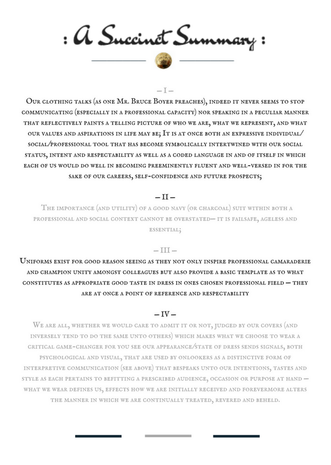
At any rate, and respective of which route/template speaks most prominently to your unique needs (read: dressing formal vs. smart-casual), at the end of the day the one thing that every gentleman should keep in mind is that in moments of dire need or confusion (those where no clear cut answer can be provided/unearthed) a navy or charcoal two-piece wool suit will always make for an able and appropriate selection (bar none) as will erring smart rather than casual so as to arrive equipped to at once inspire confidence in your appearance, abilities and self-worth all the while demonstrating that you are not afraid to go above and beyond the call of duty when the occasion calls for it.
Heretofore, the lesson I hope you can take away from this feature is that if you are dressed appropriately for the occasion/position/job interview at hand you will be better received, taken more seriously, regarded with more respect, and likely adjudged upon criteria that extends well beyond that of just your physical appearance, namely your compatibility traits such as personality, experience, creativity, productivity and ones skill set (to name but a choice few).
To wit, it certainly stands to reason that if you choose to dress like a man who deserves the job (i.e. as if you could start immediately/fulfill the sartorial requirements of the club) or perhaps arrive looking like you could one day own the place or simply bring the business to new heights, you will surely increase your odds of landing the position over (for example) a competitor who may well look just as good on paper but who is otherwise inappropriately/carelessly attired.
Be that as it may, and with a new spate of graduates beginning their journey to finding gainful employment as we speak, the job market is never more competitive than it is right now which makes paying attention to even the most minute of details — from the cut and colour of ones suit or the firmness of his handshake through the subtle positioning of ones monogram upon his shirts sleeve — increasingly noteworthy and important given many hiring managers look for something different (or that tastefully stands out) which can help make their already stressful job/decision a touch easier to come by — your style can be a game-changer in helping to close the deal/sell them upon your candidacy.
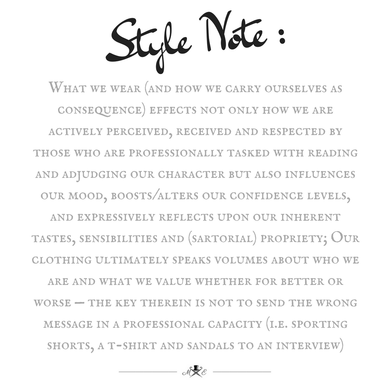
Beyond that, I’d simply like to remind you before parting ways to never forget to mind your manners as well as your body language whilst being kind, respectful and courteous to all you cross paths with as you never know who your interviewer/client/colleague will reach out to per your character and professionalism after the fact — from custodians and receptionists right through passerby employees and recruiters themselves.
And lest you remain cast in any doubt whatsoever over what to wear, just remember this: it’s better to be over-dressed than under-dressed as well as to be classy, elegant and simplistic in your appearance rather than distastefully ostentatious or flamboyant.
So, here’s to putting your (literal) best foot forward, dressing with confidence, demonstrating proper tact, and too seizing every opportunity presented before you by means of making that little added effort that will surely pay dividends in helping better position you as an attractive, competent and successful option in the eyes of future employers, partners and clientele alike — perception, whether from up close or afar, tends to drive reality after all.
Carpe diem gentlemen.
Share your thoughts, anecdotes or questions below…
Chime in below should the desire strike with your questions or answers…
ENJOYED THE READ? YOU MAY ALSO LIKE:
- Seasonal Mood Board: A Spring | Summer Style Primer
- Family Heirlooms: 5 Investment Worthy Items To Pass On To The Next Generation
- Grooming Essentials: A Gentleman's Dopp Kit Compendium
- Horological Treasures: A Gentleman's Entry-Level Watch Collecting Primer + Buying Guide
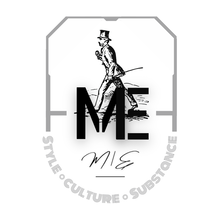

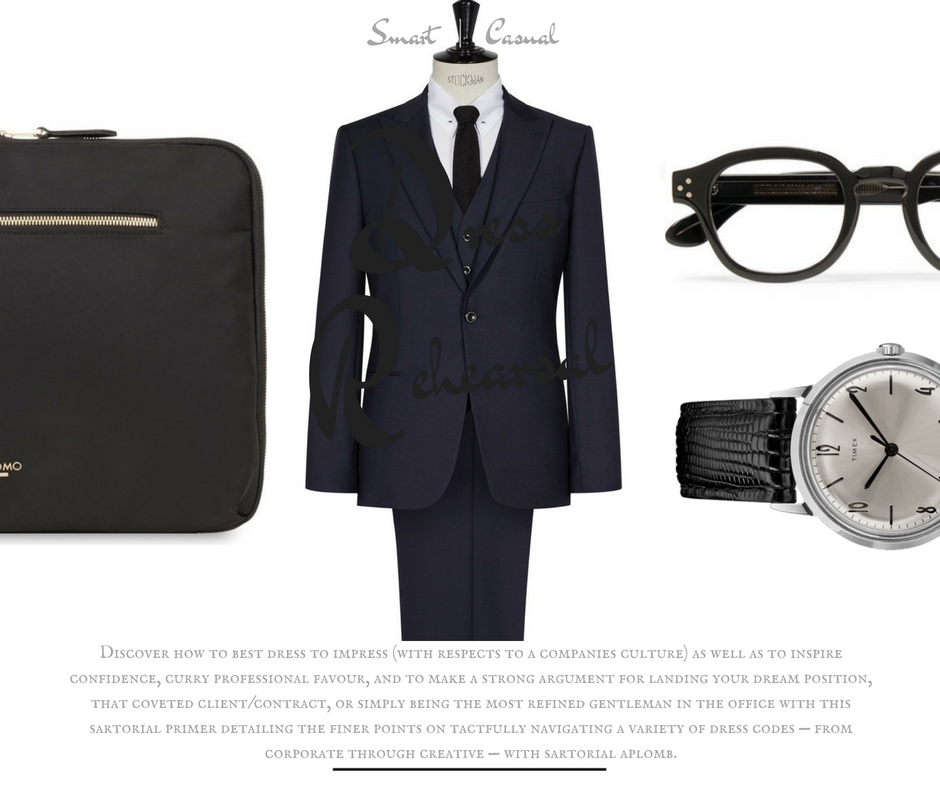





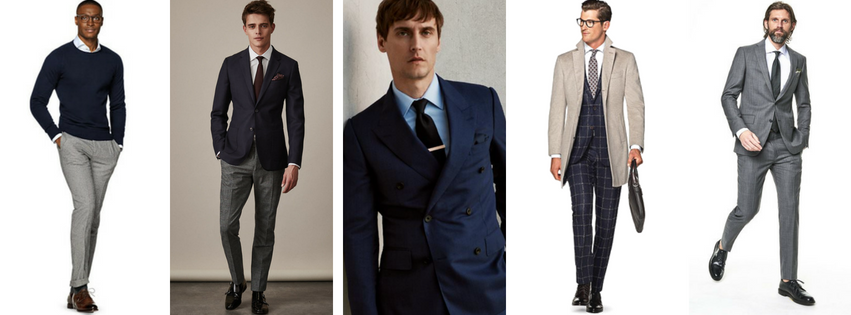
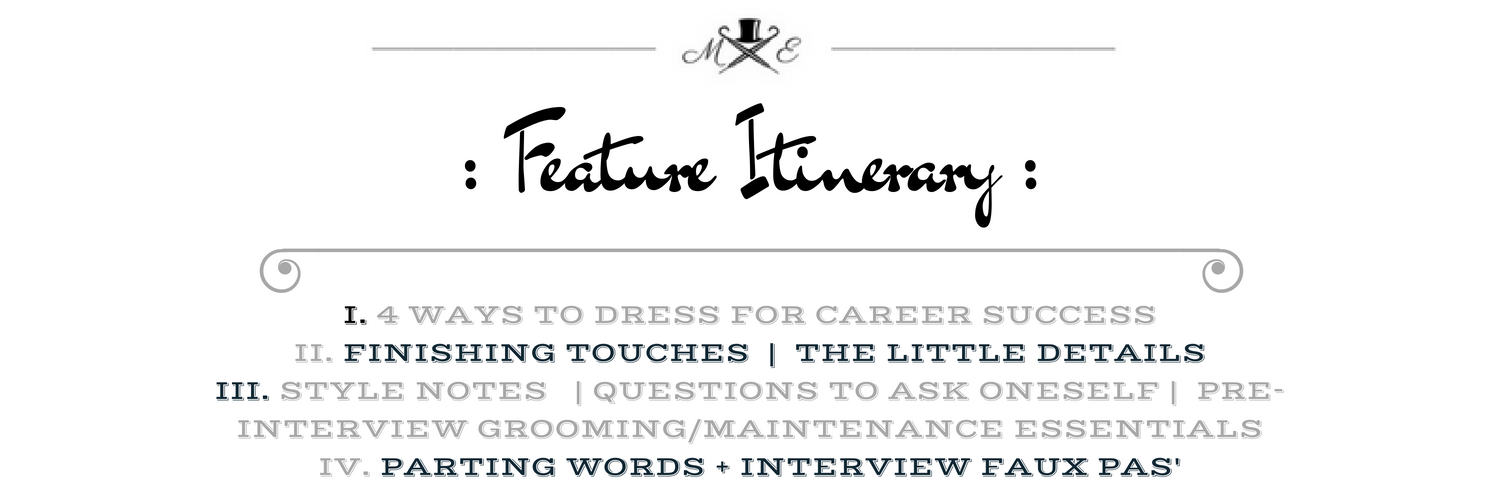


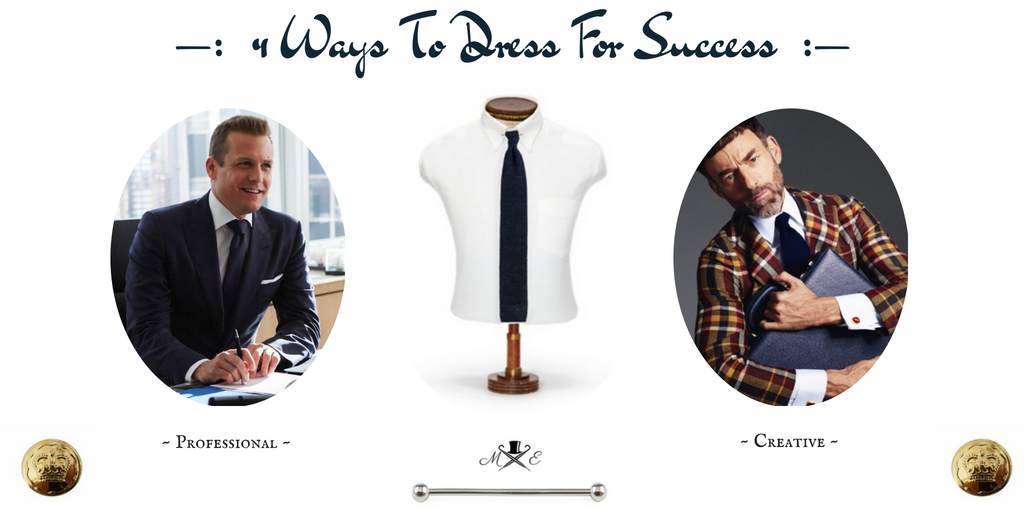


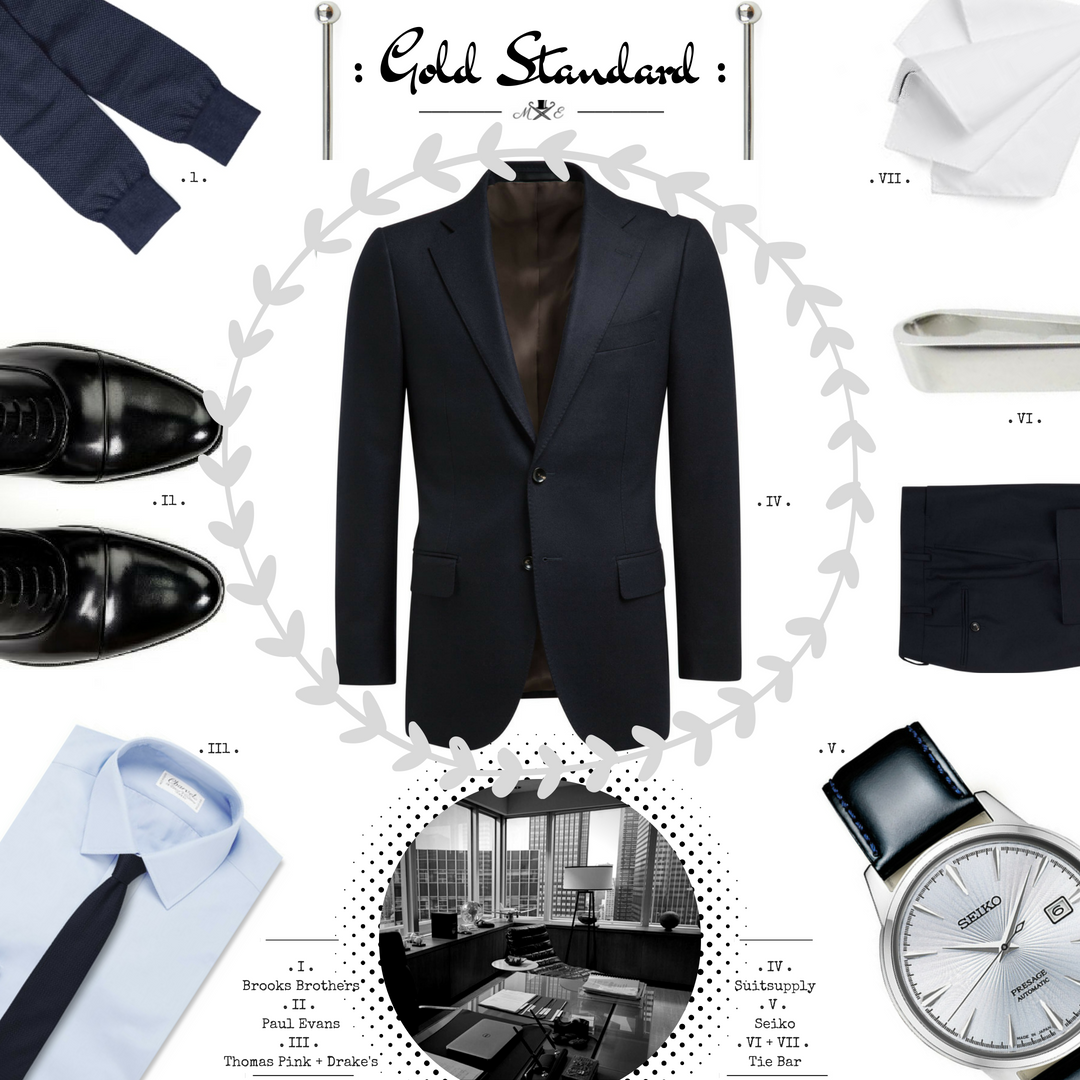




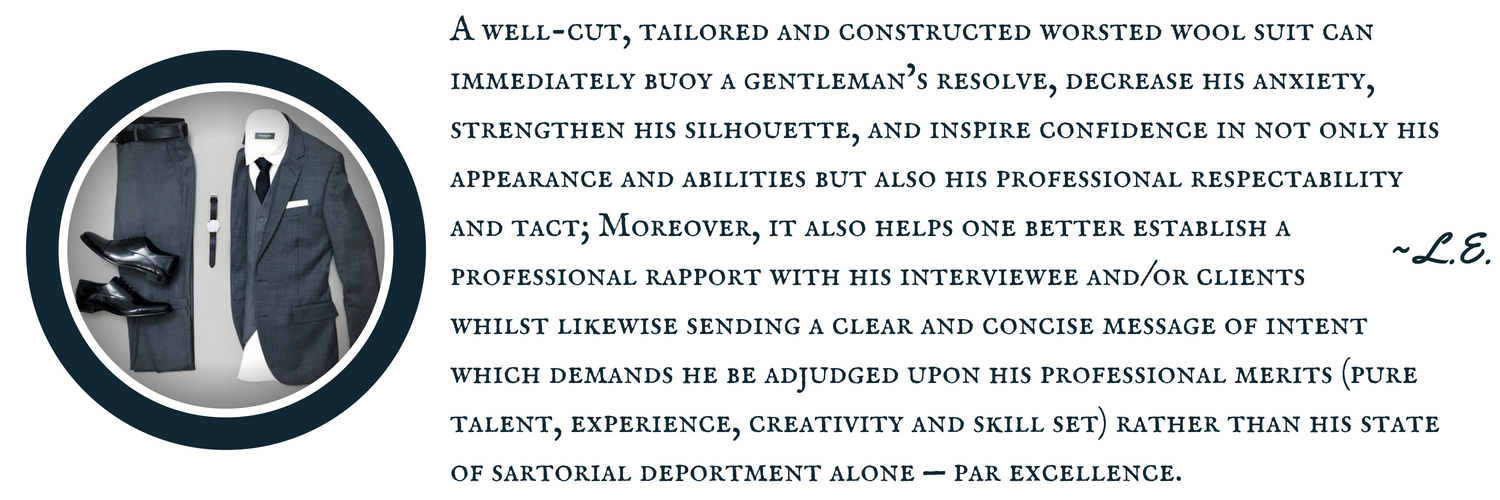




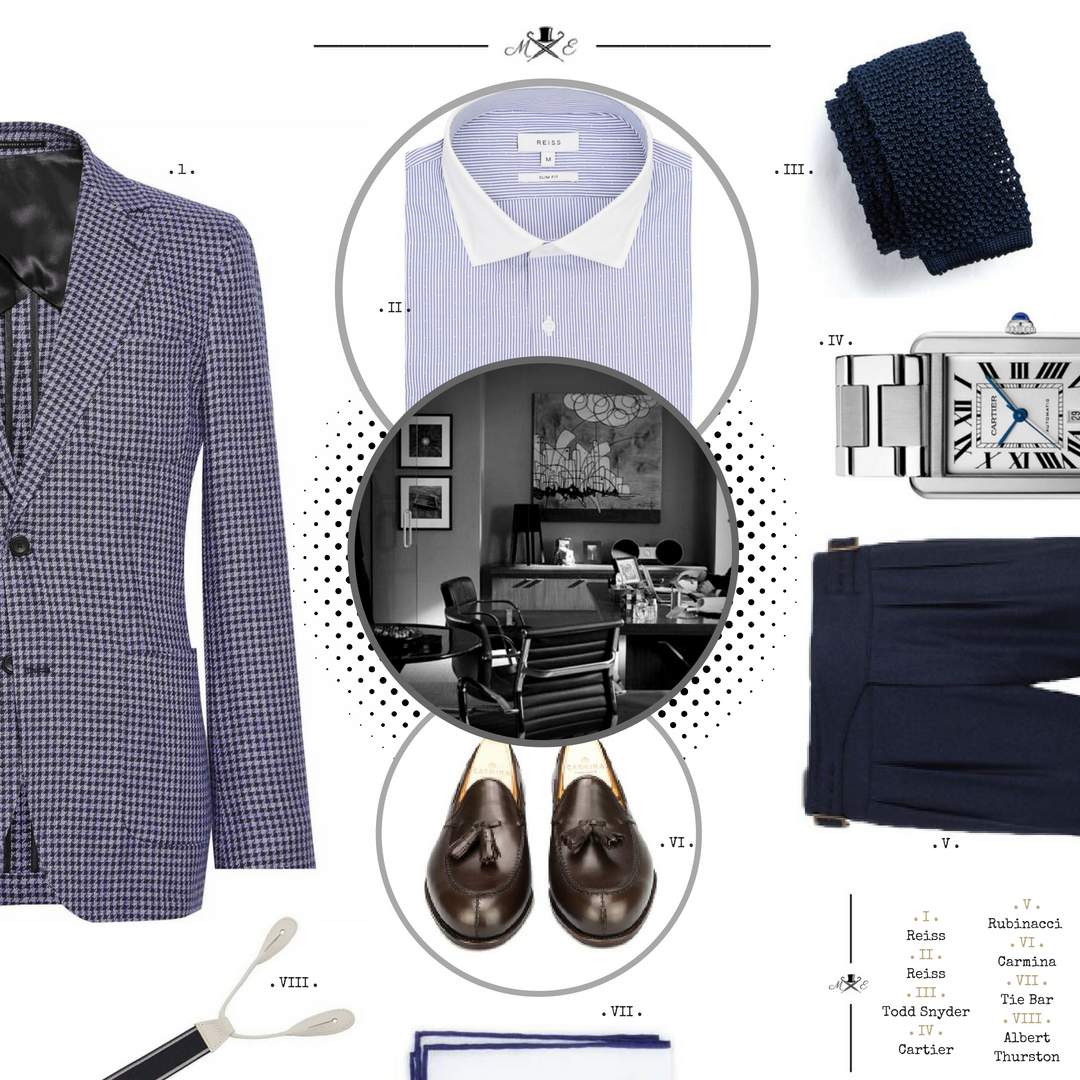




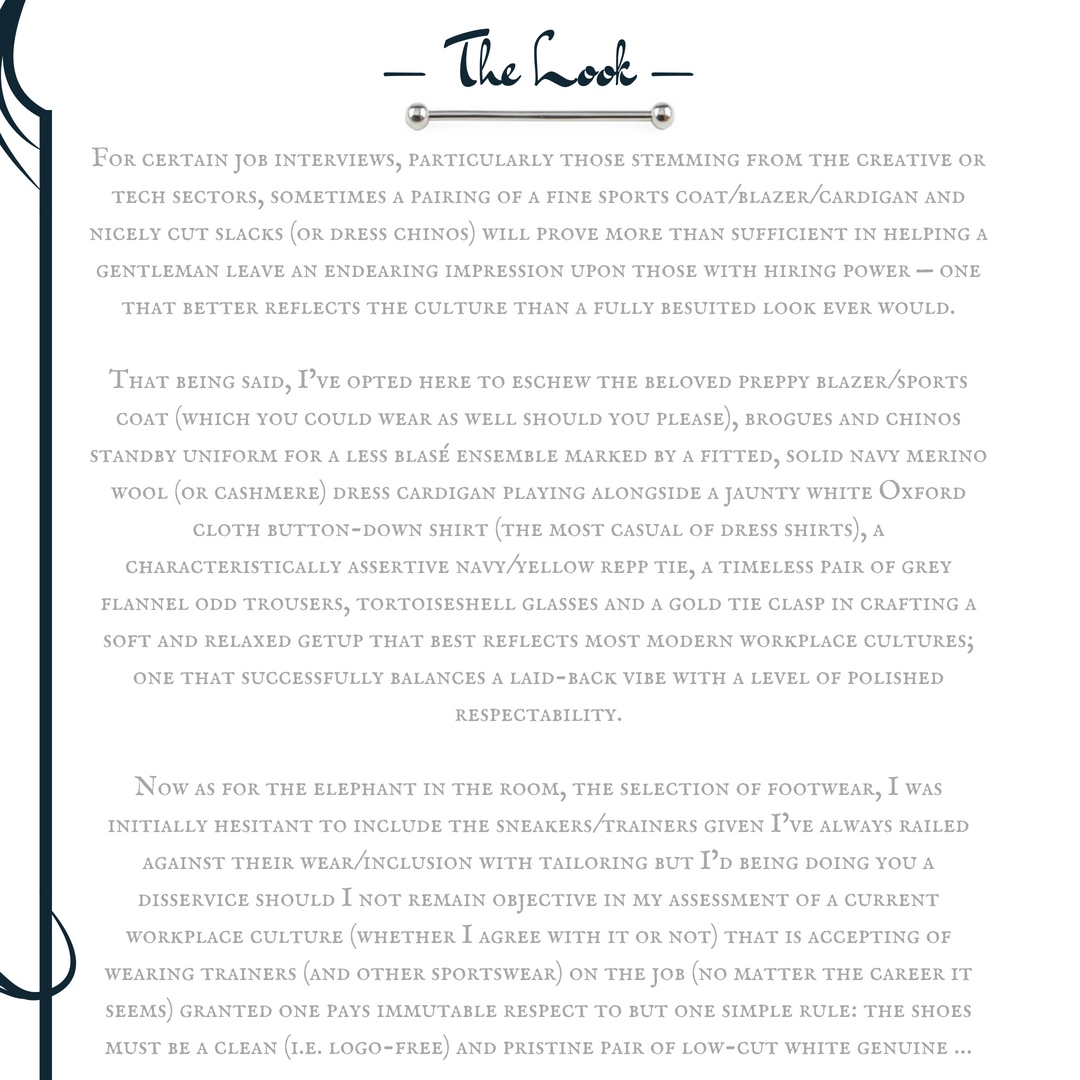
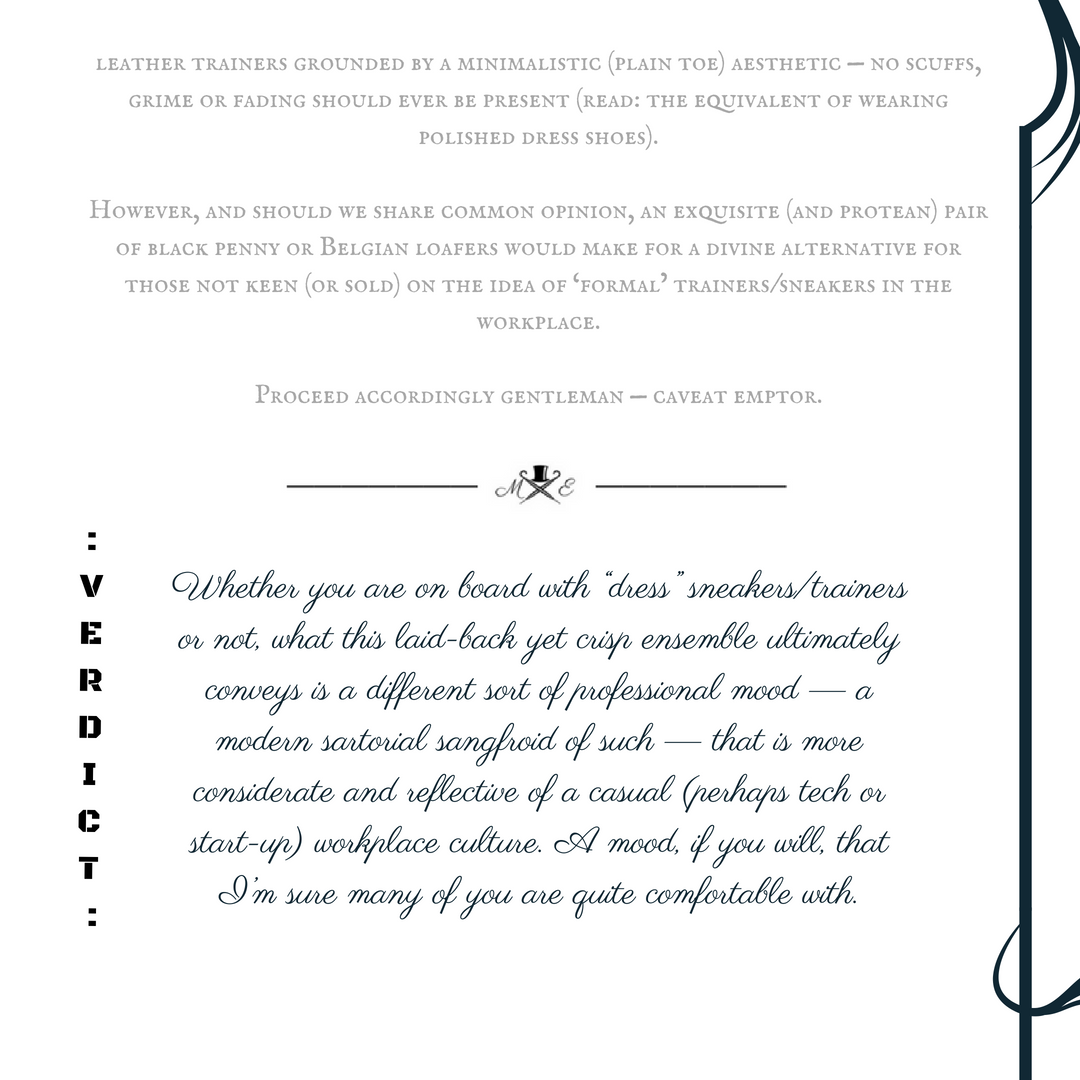


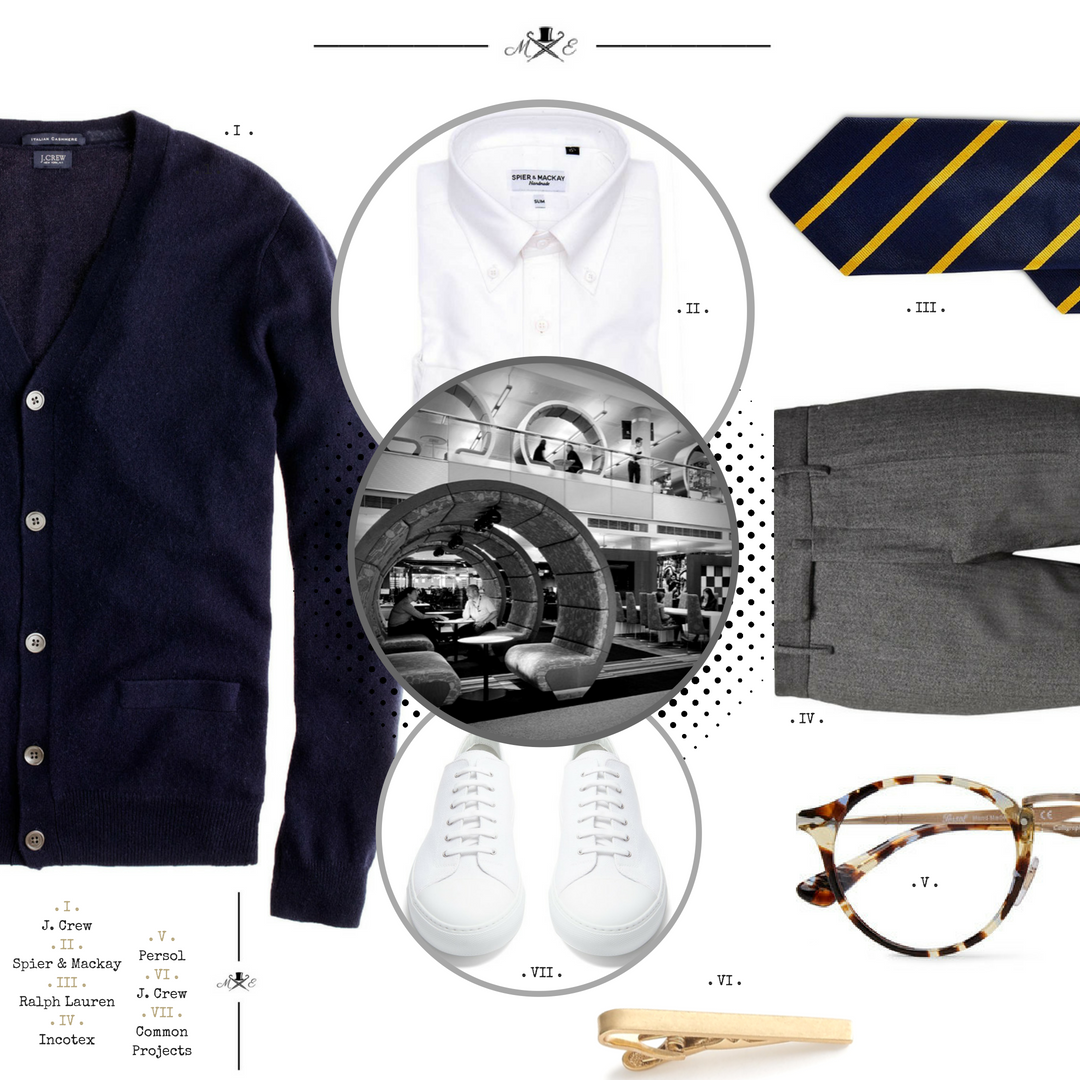


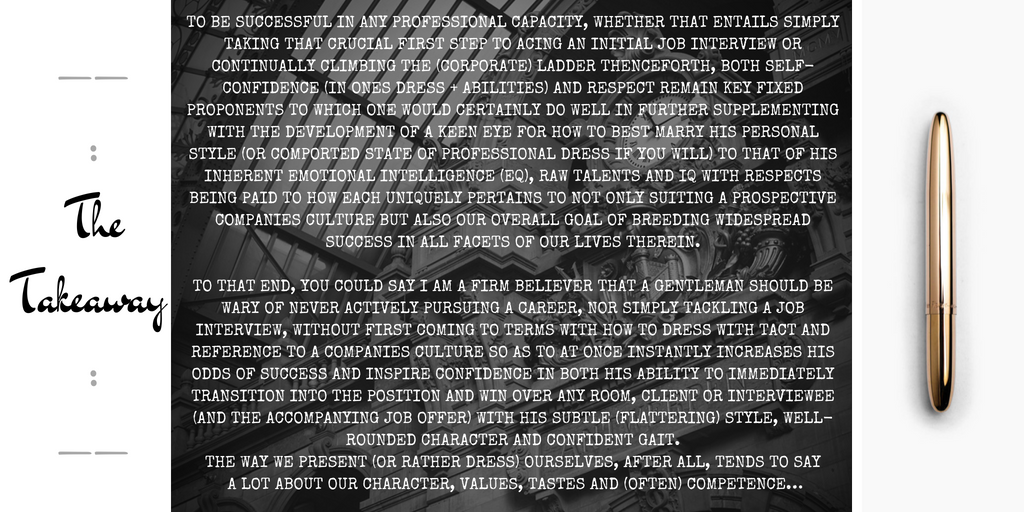











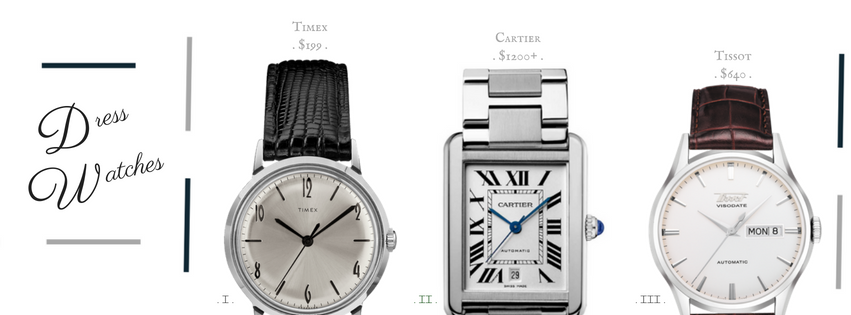













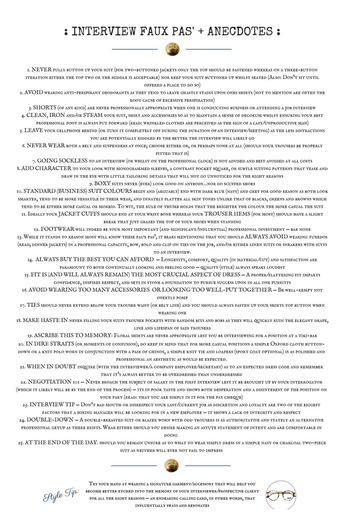

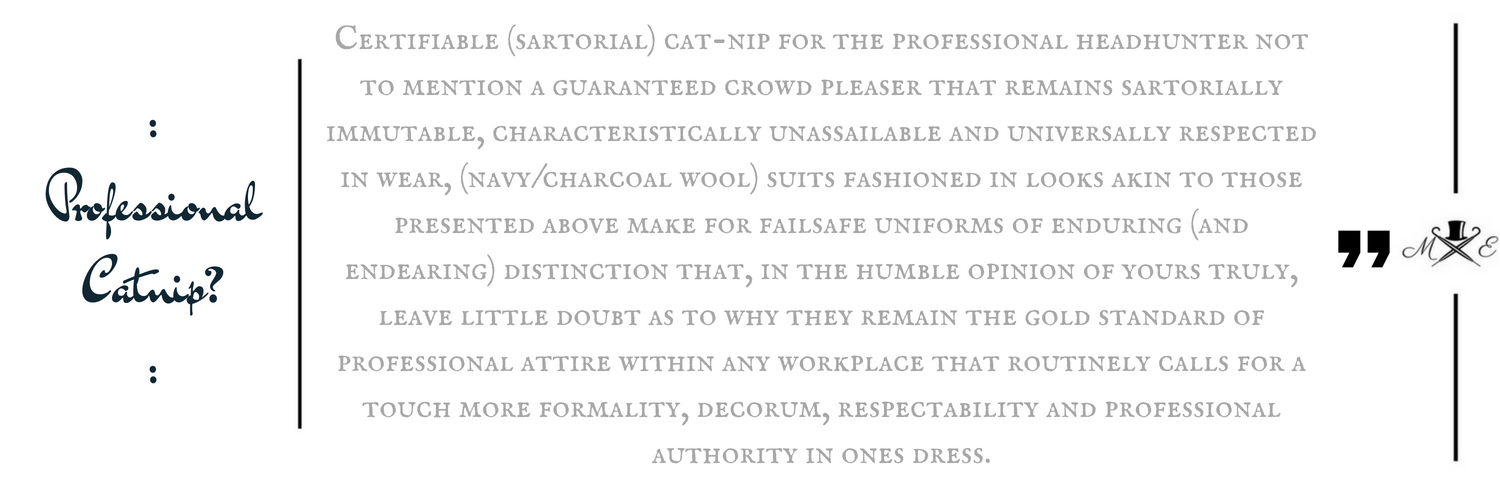


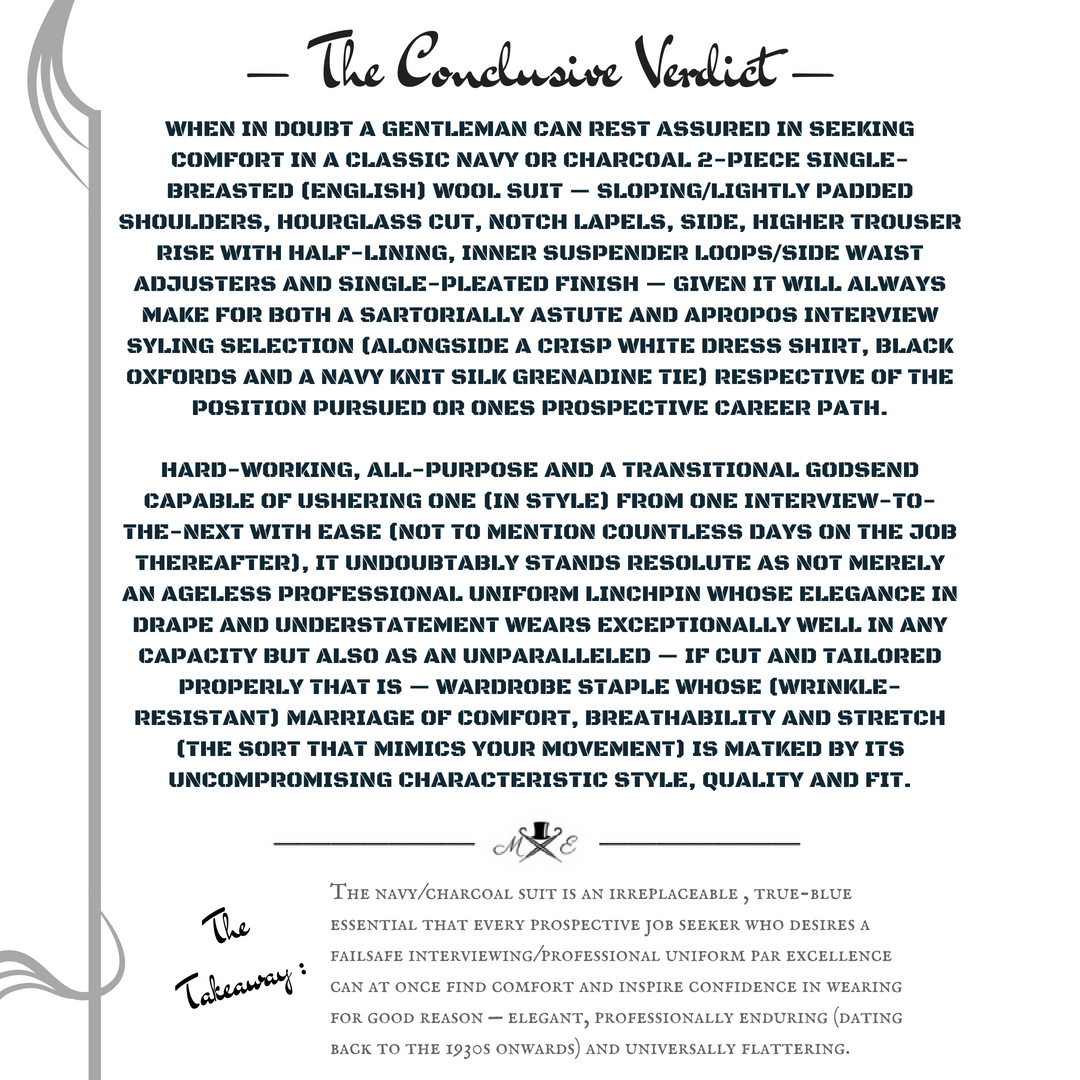

 RSS Feed
RSS Feed
